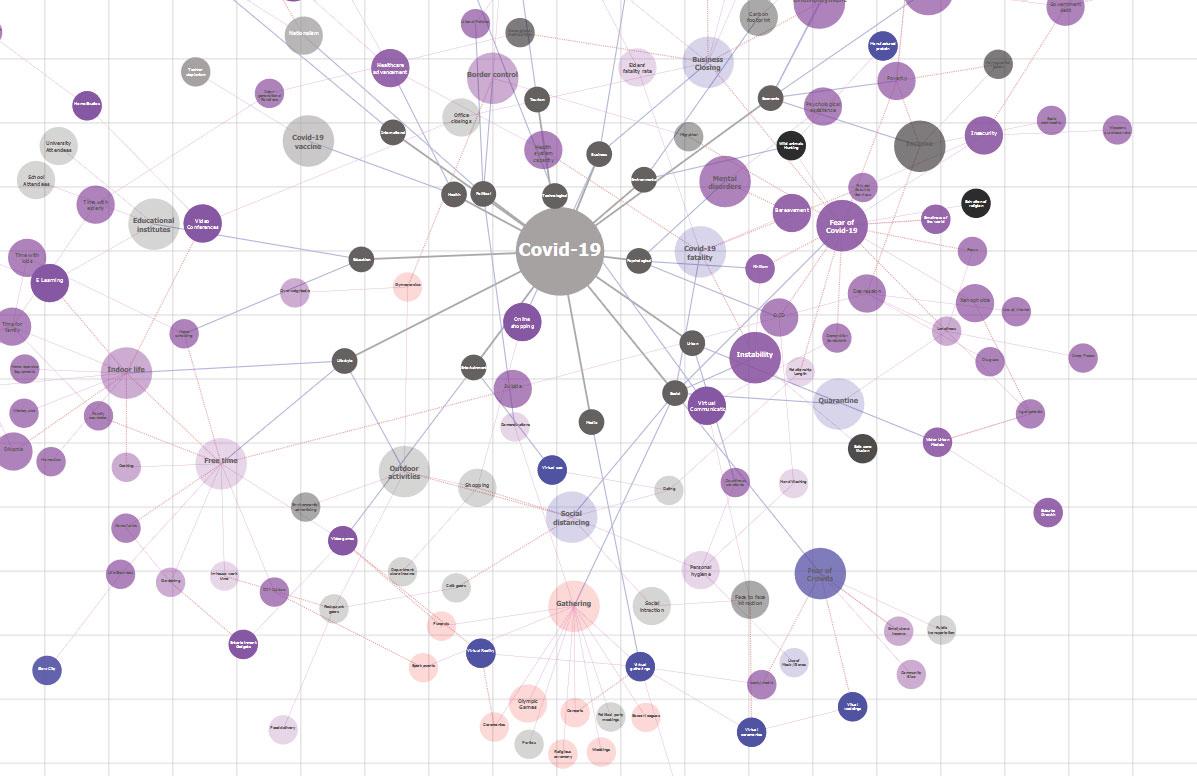Claire Nelson
SMART FUTURES? I have been doing a lot of thinking about the use of Futures Thinking to solve problems in the last six months. The topic of THE Future (as if there were only one version of it) has become the ‘it’ topic since the beginning of ‘The Great Pause’ or ‘The Global Tsunami’ or whatever name you want to give it. There are so many challenges to be addressed by leaders everywhere and all levels that the demand for problem solvers and problem solving skill is at an all time high. What to do about the restart of school? Or mask policy? or testing policy? or test labs or business reopening? In my search for ways we can help design the Reset Button, I have come across numerous offerings for seminars and webinars – from Future of Health to Future of Cybersecurity all purporting to help zoom us across the great divide between (1) the past future we must bury, and (2) the new future we must birth. This started me down a rabbit hole trying to identify how best to solve the challenge of problem solving through improving ‘telos thinking’ around the crucial first step of problem definition and articulation of complex systems and systems of systems. Thusly, I soon found myself in a worm hole – ‘a la Star Trek’ that took me into a space-time warp of tools. Picture it a galaxy of stars - each star representing a challenge or an opportunity and therein is a wormhole connecting problem definition to problem solution and in that space time tunnel is a pantheon of tools floating like antimatter. There are so many tools for problem solving, it is mindboggling
8
HUMAN FUTURES
that we have not yet reached a solid state of teleological effectiveness. Maybe it is in our definition of the task itself. Let’s see problem solving is the process of a problem analysis and resolving it in the best way possible for that situation. So, now what is analysis. This is a process of analyzing a problem - no.. we cannot use the same word in clause of the definition of the verb. So, let us rework this to say problem analysis is a process of defining the root causes of the problem in order to define (root cause analysis) countermeasures that correct or redress for the problem and then to implementing the best solution or combination thereof for the given problem situation. Problem analysis begins with problem definition. This sounds simple enough - in theory. Indeed, all seems well and good when we are talking about deciding how to fix a flat tire or a leaky faucet or the slow computer. These are problems that have a seemingly finite number of plausive, possible, and preferred alternative outcomes and solutions. One can review the tools at our disposal and using our critical thinking and analytical skills we can identify pros and cons of tool A versus Tool B and arrive at a teleological solution or in layman’s terms the solution which provides the best positive outcome bearing in mind the potential negative consequences. But I found myself in a trap or rather a hole --not to mix metaphors. Even the simple cases I propose demand a decision around space and time limits. How do we limit the solution and problem space for time and distance? There have been many problem-solving techniques









